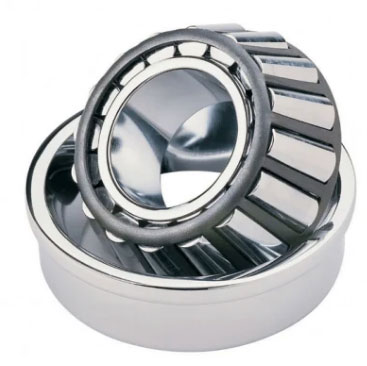Home / News / Spindle Bearing Preload Formula: The Key to Optimal Performance and Bearing Life
Spindle Bearing Preload Formula: The Key to Optimal Performance and Bearing Life
Introduction
Spindle bearing preload is a critical factor affecting the performance, precision, and life of spindle bearings in high-speed machining applications. Proper preload can reduce bearing vibration, increase stiffness, and extend bearing life, while incorrect preload can lead to premature bearing failure and decreased machining accuracy. In this article, we will discuss the importance of spindle bearing preload, the factors affecting preload, and the spindle bearing preload formula for determining the optimal preload value.

Importance of Spindle Bearing Preload
Reduced Vibration: Proper preload reduces bearing vibration, which in turn decreases noise and improves machining accuracy.
Increased Stiffness: Preloading spindle bearings increases their stiffness, providing better support for the cutting forces generated during high-speed machining operations.
Extended Bearing Life: Correct preload can help distribute load evenly across bearing elements, reducing localized stress and extending the life of the bearing.
Factors Affecting Spindle Bearing Preload
Bearing Type: The type of bearing used in the spindle (e.g., angular contact ball bearings, cylindrical roller bearings, etc.) can impact the required preload value.
Bearing Arrangement: The bearing arrangement, such as back-to-back, face-to-face, or tandem, influences the preload requirements.
Operating Conditions: Factors such as temperature, speed, and applied load affect the optimal preload value.
Machining Accuracy: The desired machining accuracy can influence the amount of preload necessary for optimal performance.
Spindle Bearing Preload Formula
Determining the optimal spindle bearing preload value requires considering various factors, including the type of bearing, bearing arrangement, operating conditions, and machining accuracy. One widely used spindle bearing preload formula is:
Preload (Fp) = k * Fr
Where:
Fp is the preload force
k is the preload factor, which depends on the bearing type, arrangement, and desired machining accuracy
Fr is the radial load acting on the bearing
The preload factor (k) can vary depending on the specific application and bearing type. Some common preload factors are:
Light preload: k = 0.25 to 0.5
Medium preload: k = 0.5 to 0.75
Heavy preload: k = 0.75 to 1.0
It's essential to consult bearing manufacturers or use specialized software to determine the appropriate preload factor for your specific application.
Conclusion
The spindle bearing preload formula plays a crucial role in determining the optimal preload value for spindle bearings, which directly impacts their performance, precision, and life. By considering factors such as bearing type, bearing arrangement, operating conditions, and machining accuracy, engineers can use the spindle bearing preload formula to calculate the appropriate preload value. This, in turn, ensures optimal performance and extended bearing life, resulting in increased productivity and reduced maintenance costs for high-speed machining applications.
- Previous: CNC Bearing Temperature: Causes, Effects, and Solutions
- Next: Spindle Bearing Preload Tool: Ensuring Precision and Prolonging Bearing Life













